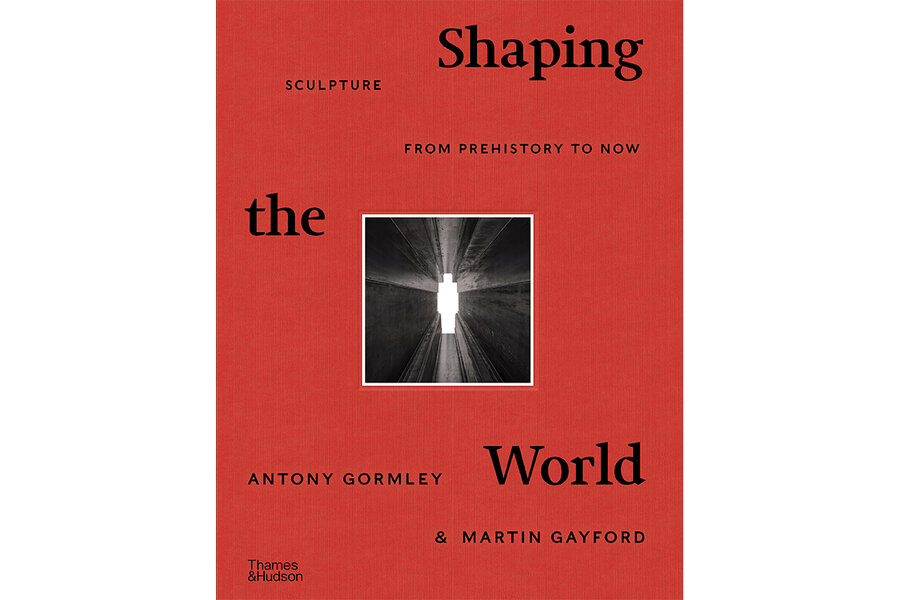Essential shapes: sculpture from the ancient to the avant-garde
Loading...
Imagine you’re eavesdropping on a chat between an artist and an art critic as they meander around a museum discussing works from ancient to avant-garde. That’s the vibe you get perusing “Shaping the World: Sculpture From Prehistory to Now” by distinguished British sculptor Antony Gormley and British art historian Martin Gayford. It’s not a chronological survey of masterpieces; you won’t be dizzied by a parade of “isms.” As they compare works from across millennia and continents, their conversation trains the eye and engages the mind.
With more than 300 gorgeous illustrations – many occupying a full page – the book is a visual feast. It demystifies sculpture by pointing out commonalities that works share, regardless of their origin.
Making three-dimensional objects was the “catalyst,” Gormley says, “for the emergence of the modern mind.” Before the dawn of civilization, our ancestors shaped solid matter into fictitious creations that blended reality and fantasy, such as Lion Man, a 12-inch figure with a human body and lion’s head, carved from a mammoth tusk around 40,000 B.C.
Imagination, the authors say, separates human beings from other animals. The vast, megalithic standing stones at Carnac in France, dating from 3300 B.C., stretch for miles, creating an immersive environment. Similarly, contemporary sculptor Richard Serra’s Torqued Ellipses, 14-foot-high walls of weathered steel, creates an enclosure around the viewer. Both the ancient and modern examples define a mysterious human journey both separated and linked by thousands of years.
Art history, Gayford says, is a continuous attempt to communicate meaning in physical form. For example, Robert Smithson’s 1970 land-art work, Spiral Jetty – a quarter-mile-long spit of rocks curling into the Great Salt Lake – corresponds to the monumental Nazca lines incised in the shape of animals thousands of years ago in the Peruvian landscape. Both demonstrate how human beings responded to, and altered, the natural topography that surrounded them.
The authors discuss essential properties of sculpture, such as the play of light and dark on hard surfaces. In the 15th century, Michelangelo perfected the illusion of soft, warm skin in his luminous marble figures, showing how our perception of light influences the form, content, and message of the work. Light reflecting from his Pietà transforms a carved block of marble into an embodiment of grief and transcendence. In the 17th century, Gian Lorenzo Bernini orchestrated the quantity and quality of light for dramatic emotional effect. In Ecstasy of St. Teresa (1647-52), gilded metal shafts represent heavenly light and God’s benediction on the suffering saint, spotlit by light shining through panes of colored glass.
Large-scale sculpture can express shared values and aspirations, as in Frédéric-Auguste Bartholdi’s 1886 Liberty Enlightening the World, better known as the Statue of Liberty, or Paul Landowski’s Christ the Redeemer from 1931, the 98-foot-tall, mountaintop statue looming over Rio de Janeiro. Such outdoor works are in dialogue with the landscape, the buildings, and society, becoming a totem of collective feelings and identity.
The book offers convincing testimony that ideas and emotions transformed into stone, metal, or clay are a hedge against forgetting, so that transient moments and subjects don’t disappear into oblivion.






